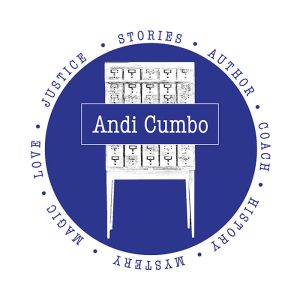I stood in front of the class while the Samoan football player with a full-ride to the University of Washington, the young woman whose family had fled Tehran, and the chair of the English department looked back at me. “Today, we will be talking about comma splices,” I said. “A comma splice is when you put a comma in the wrong place in a sentence.”
I should have been able to see the chair’s wince from the back of the room.
Not only had I misunderstood the idea of “splicing” in general, which is pitiful since my father is a horticulturist and I’ve known the idea of splicing as it comes to plants my whole life, but I had just taught a class of developmental writers – writers who were not quite ready for college-level writing – completely wrong information.
A comma splice is not putting the comma in the wrong place – that’s just, well, putting the comma in the wrong place. A comma splice is an error created when a writer connects two sentences with a comma alone, as in Andi went to the store, she bought milk and eggs. A comma’s job is to separate things, not join them, so we cannot use a comma to connect two sentences.
I never forgot that grammar lesson, and let’s just say I haven’t forgotten the conference after that class either. (Gratefully, she gave me another chance, and I taught developmental writing for many years after that.)
This experience taught me a lesson that Mrs. Hooker had begun giving me in 8th grade – grammar matters. It doesn’t matter because of some set of arbitrary rules (because the rules aren’t arbitrary), and it doesn’t matter because it makes us look smarter if we can use fancy sentence structures (although it can). Grammar matters because grammar is what gives sentences their clarity and changes the meanings of words. Without grammar, we might as well be trying to read an unorganized collection of magnetic poetry words – the words mean, but they don’t mean together.
New writers often want to experiment with grammar, to write a whole story of sentence fragments, to eschew commas altogether. . . and that kind of writing can be fun. But as reading – it’s atrocious. It takes a master writer to be able to toss aside the rules of grammar and still make meaning. Most of us are not master writers.
And most of us know that. Perhaps this is why the number one thing students and clients tell me when I look at their work is, “I’m terrible at grammar. ” Hands down – the most pressing concern of many writers is that their grammar is incorrect.
But of course, most writers use grammar very well – if we read or speak regularly with people who share a language, our grammar is going to be mostly correct just through practice. So let me assuage those fears – most of us write quite correctly without even trying.
And yet, still we worry. Still, we want to know more. We want to be able to take the words we have and order them to mean differently – Her skin glowed with the yellow of sunbeams through the shades is VERY different than Her yellow skin glowed, right? And it means differently when we say, I love going to visit Grandma, but I adore visiting Grandpa as opposed it I love going to visit Grandma; I adore visiting Grandpa. One word and a different punctuation mark, and the sentence means entirely differently.
Plus, we all know the mortification that comes when we misspell or mistype something publicly – use the wrong “weather/whether” and watch out! Those pointing fingers appear like magic.
Grammar is powerful and amazing, and I’m so glad I had the honor of learning it so deeply by teaching it. And I’m excited to go back to it.
Starting on April 1st, I will be offering a 3-week grammar and writing culture intensive. We will cover sentence structure, punctuation (i.e. uses for the semi-colon that extend beyond the emoticon), sentence variety, verb structures, Netiquette, proofreading techniques, and much more. Each weekday for three weeks, you will receive an email lesson from me that includes examples and links to websites where you can learn more. Also, students who are interested can join a private Facebook group to ask questions, post examples, and discussion all things grammar and writing etiquette related. Finally, I will read one-page of work by each student and look for patterns of error in your grammar.
The price of this class is $125, and there are 25 seats available on a first-come, first-served basis. The course is appropriate for anyone – business people who write for work, frequent emailers who just want to have more correct grammar, professional writers who need a brush-up – all are welcome. Please email me at andilit_at_gmail.com to register.
I hope you’ll join us. I think it’ll be fun – as we all know, poor grammar can be quite hysterical – and informative for all of us. Plus, you can have the pleasure my students have always enjoyed – getting glee from pointing out my grammatical mistakes, as you find them.
What do you think of grammar? Love it? Hate it? Why?

